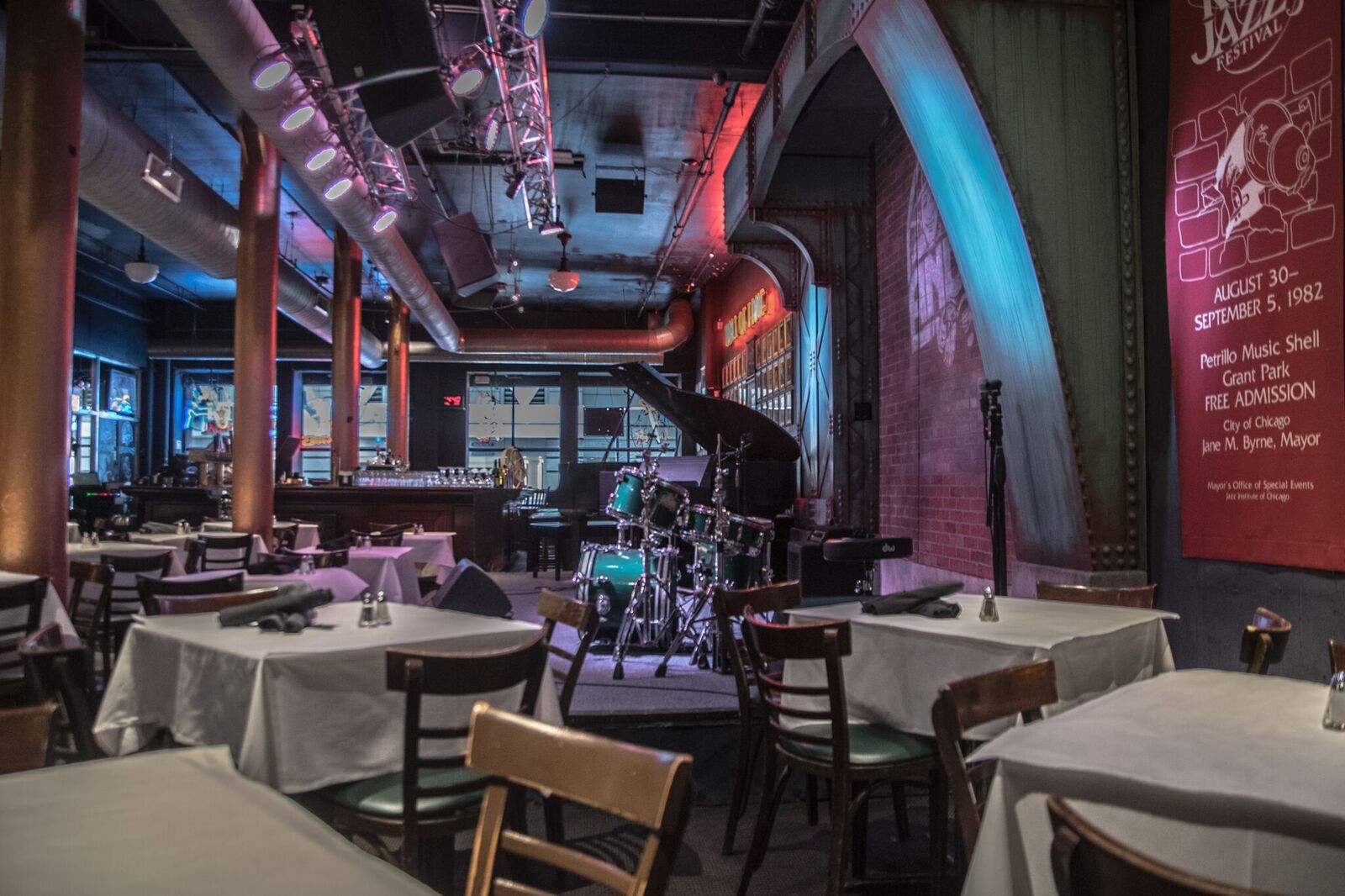Introduction
This was a concept project for Andy’s Jazz Club. Andy’s Jazz Club is located in Chicago, IL. Over the years it has evolved to being a prime destination for listening to the city’s top jazz musicians. For this project I focused on redesigning the menu page and reservation page in order to help increase revenue. For my redesign I wanted to create an experience for the user. I was aiming to bring the feel of being at the club to the website.
Andys Current Site
Andy’s current site leaves a lot to be desired. It is outdated and very busy. The information is hard to view and process because there is so much going on. It’s not a positive experience. It is difficult to be inspired by this site to want to make a reservation at Andy’s for dinner and a show.
Research Process
I began by conducting user interviews. From these user interviews two things really stuck out to me that helped me to identify the pain points of this site and then discover my solution for my redesign. One user mentioned that she views restaurant websites as a reflection of the restaurant itself. If the website is poor she would assume the restaurant was poor as well. I asked another user if he would be interested in experiencing an evening of dinner and show and he responded “With the right people and the right music it can be a magical evening. It’s like stepping back in time”. From my research I concluded that people are excited about an evening of dinner, drinks and a show. There is a sense of romanticism. They are however unlikely to go to a venue with an uninspiring or poorly done website. These conclusions then formed my problem statement and solution statement.
Problem Statement: People want to experience a night at Andy’s Jazz Club with dinner and jazz, but are uninspired by the website and are unlikely to make a reservation.
Solution Statement: Redesign Andy’s website to inspire people to make reservations for a full evening out (dinner, drinks, music).
I then created my user flow, sketches and wireframes. I found these to all be fairly straightforward. My pain point I was solving for was not so much with the user flow or IA of the site, but rather with the look and feel of the site. My user flow, sketches and wireframes were helpful in creating the structure of my website, but I still needed to address the problem of how a user would feel when coming to the site.
User Persona
At this point I already had a clear vision of who my user was, so I went ahead and created my user persona. I found this extremely helpful for helping me create the experience I wanted the user would have when visiting the site. Whenever I was questioning a decision or found myself at a standstill I would ask “Would Jeremy like this” or “What would inspire Jeremy?”. Referring to my user persona was the driving force behind my prototype.
Prototype
After I finished my high fidelity prototype I began usability testing. The feedback was that people really got the sense that they were at Andy’s. They could feel the vibe of the club from visiting the site. There were however a few problems on my reservation page that I needed to address. People commented that there were missing fields on the reservation form that would be necessary to have in order to make a reservation. I was able to address this problem in my next iteration of my prototype.
Conclusion
Working on this project taught me an important lesson. Trust the design process. When I began this project I was simply focused on a much needed redesign. I wasn’t focused on solving a problem. Because of this I often felt like giving up because I felt that redesigning the menu page was completely irrelevant. But by looking deeper and my research findings I was able to find the problem and work towards a solution. There were also times when I was working ahead of myself and focused more on the final design and by doing that I was unable to come up with a design that would solve the problem, When I slowed down and followed the design process everything fell into place and I was able to make progress and eventually come up with a design that created an experience for the user.











